
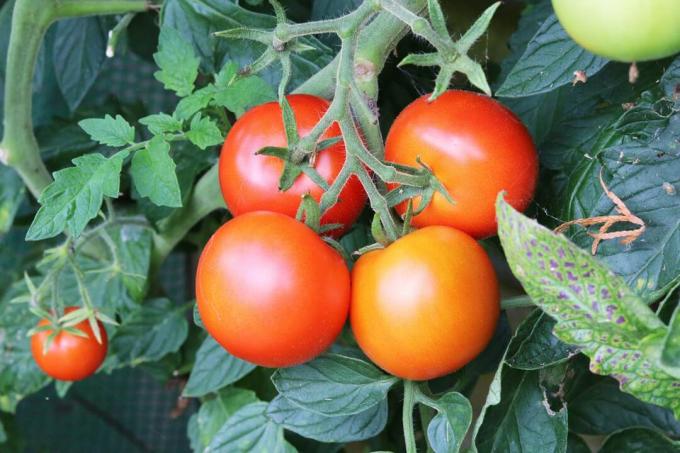
Table of contents
- Advantages of mixed culture
- Good plant neighbors
- Tomatoes as a support
- Heavy feeder as a neighbor
- difficult partnerships
- celery
- cabbage
- cruciferous
- Bad neighbors
- nightshade family
- pumpkin
- More bad neighbors
Tomato plants are particularly susceptible to fungal diseases. As a result, it can happen that the plants die within a few weeks after just one harvest cycle. With the right plants as neighbors, you can encourage perennial health and a bountiful harvest.
Advantages of mixed culture
Mixed culture is a concept that has evolved over generations. It was observed which types of vegetables have a positive or negative effect on the vegetables in the immediate vicinity. Especially with sensitive plants such as tomatoes, it is important to pay attention to the right plant neighbors and not to plant unsuitable types of vegetables or herbs in the immediate vicinity.
Positive effects of mixed cultures:
- mutual pest control
- disease prevention
- optimal use of the available space
- optimal use of available nutrients
Another advantage of mixed cultures is that the plants can protect themselves even in extreme weather. For example, tomato plants appreciate consistently moist soil, which can be achieved by plants that cover the soil well. But the tomato is also a sun-worshipper, and plants that don’t tolerate as much sun thrive in its shade.
A notice:
In addition to good and bad partners, there are also so-called neutral neighboring plants. They hardly support each other, but there is also no negative effect when planted right next to each other.
Good plant neighbors
The classic combination with tomato plants is basil. Not just because it's convenient when harvesting, because both are often eaten together, but basil keeps whitefly away and prevents powdery mildew. Also have fungicidal properties chamomile and Garlic, which are suitable as good partners in the tomato bed.

Other good combinations:
- salads
- Nasturtium
- bush beans
- carrots
- mint
- spinach
- marigolds
When choosing suitable partners, you should, if you have other vegetables in the bed plant, again making sure that the good neighbors also plant other vegetables in addition to the tomato tolerate.
A notice:
Tomato plants are susceptible to late blight, so combinations with crops that have fungicidal effects should be preferred. This includes mixed cultures with vegetables from the leek family.
Tomatoes as a support
Not only the tomato plants are protected by good partners, the tomatoes themselves are good partners for other crops. In the case of nasturtium or beans, their intense smell acts as a defense against aphids. Pests on beans are also driven away by the intense smell of the tomato plants.
A notice:
Plant broth or manure can be prepared from removed shoots and leaves of the tomato plants, which you can in turn use to ward off pests for other crops.
Heavy feeder as a neighbor
Tomato plants are heavy feeders, which is why they are rarely placed next to other heavy feeders in mixed cultures. However, if there are more than enough nutrients in the soil, as long as the vegetable species do not hinder each other in some other way, there is nothing to be said against a combination with heavy feeders.
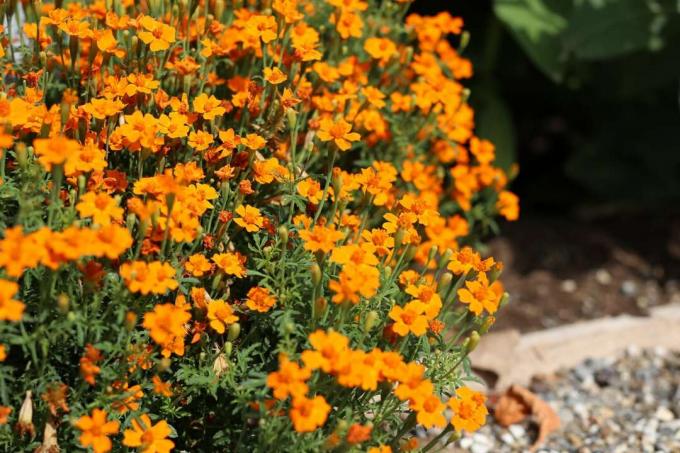
Therefore, the following plants are also suitable as neighbors for tomatoes:
- Corn (Zea mays)
- root parsley (Petroselinum crispum subsp. tuberosum)
- endive (Cichorium endivia)
- spice tagetes (Tages tenuifolia)
difficult partnerships
In addition to completely unsuitable partnerships, there are also neighbors with whom the tomatoes tend to have a difficult relationship. They do not fit into any category, because the effect on each other is not known to every hobby gardener. he wishes.
celery
Celery is often cited as a good partner for tomatoes. In principle, this partnership is not disadvantageous, but it can happen that the fruits of the tomato have a slight taste of celery. If this does not bother you or if the fruits are to be processed into soup anyway, then there is nothing wrong with this partnership.
cabbage
Cabbage and tomato plants also have a difficult relationship with each other. Dead plant parts of cabbage species favor autumn late blight in tomato plants. On the other hand, the intense smell of the tomato plants drives away pests such as flea beetles or cabbage whites on cabbage species. For this reason, only types of cabbage that grow quickly are suitable for mixed cultivation. This includes, for example, kohlrabi or cabbage, which can be harvested early.
cruciferous
In general, you should be careful with plants from the cruciferous family, as they are also susceptible to late blight are. As neighbors, only cruciferous plants are suitable for tomato plants, which also grow quickly, such as:
- radish
- garden cress
- arugula
- Mustard
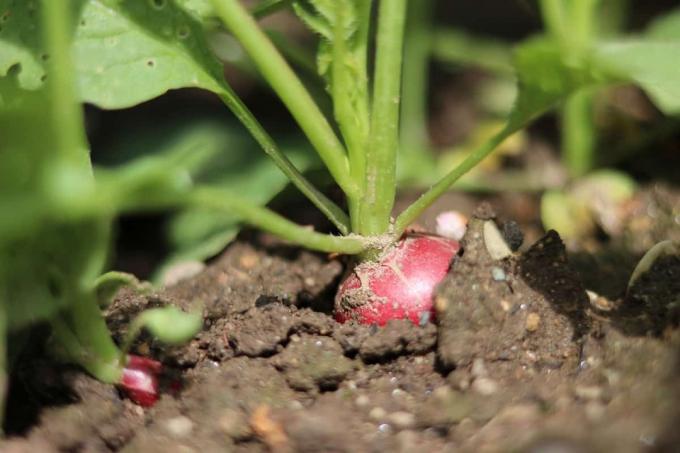
Bad neighbors
There are some combinations that are neither good nor neutral, but on the contrary even harm each other.
nightshade family
These primarily include plants that, like the tomato plant, also belong to the nightshade family. Solanaceae are susceptible to the same diseases and pests:
- potatoes
- paprika
- eggplants
in the combination are, for example, a found food for potato beetles.
pumpkin
Tomato plants and cucurbits are also a bad combination. The main risk here is that powdery mildew will spread quickly.
More bad neighbors
- fennel
- Beetroot
- chard
- Peas
- Red cabbage
 Home editorial office
Home editorial office
Learn more about tomatoes
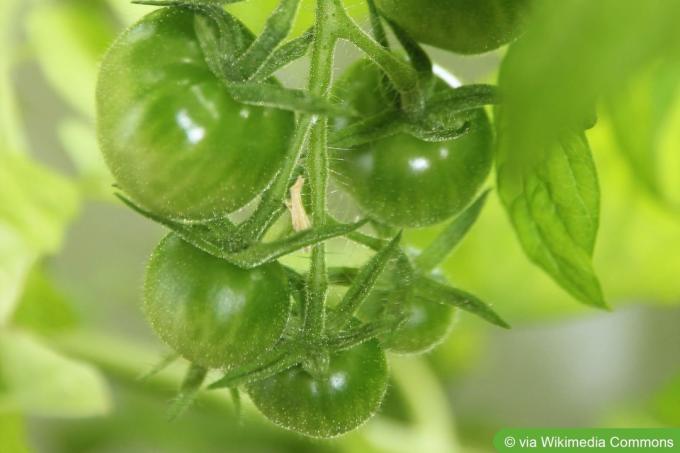
Mexican Honey Tomato: Taste & Cultivation
With the "Mexican honey tomato", hobby gardeners can bring a particularly sweet tomato variety into their garden. Due to its low acidity, it is one of the most popular sweet tomatoes and at the same time very easy to care for.
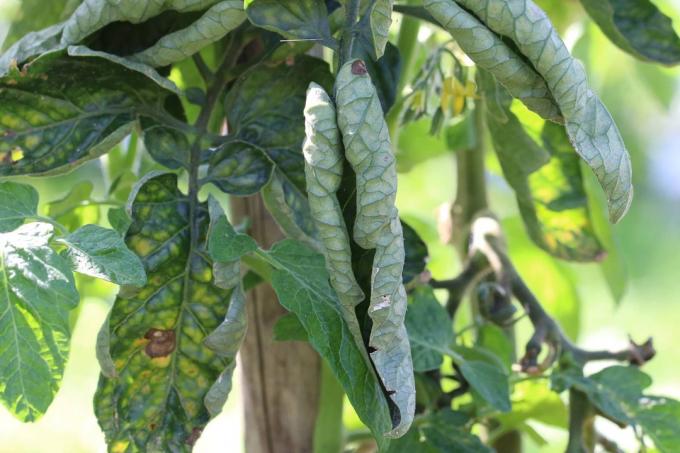
Tomato leaves curl: what to do?
There are many causes of curled leaves on tomato plants. Some are harmless, others can ruin crops. So waiting is not an option. Like a detective, you must search for clues. And then, if feasible, tailor-made countermeasures. Here's what to do when tomato leaves curl.
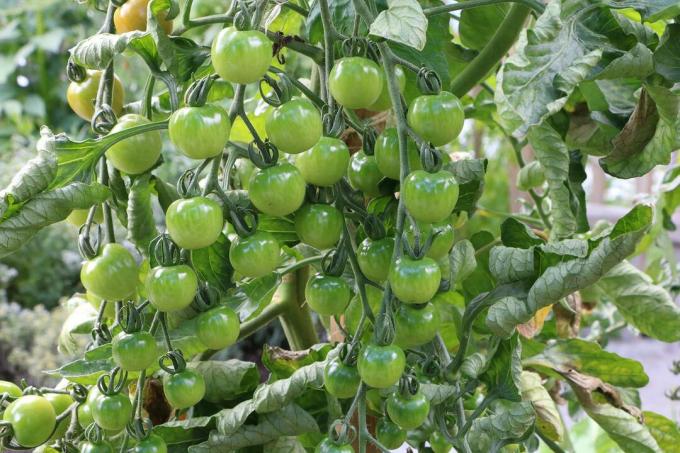
Fertilize tomatoes: how often, when and with what?
Tomatoes need a consistently high amount of nutrients for the development of flowers and fruits. In addition to choosing the right fertilizer, the amount and frequency also play an important role. All essential information for an optimal dosage can be found here.
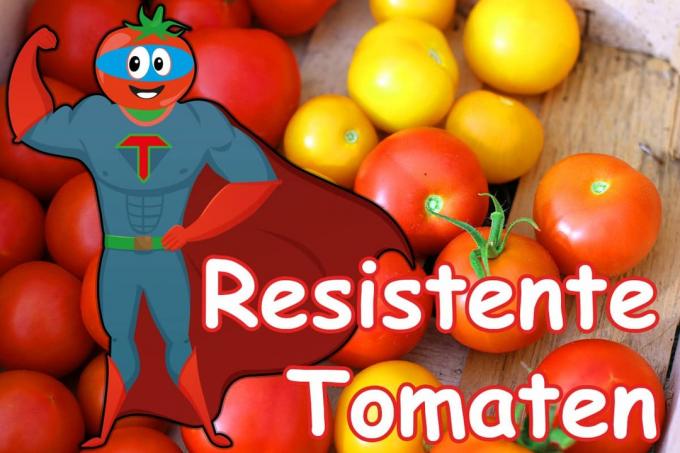
11 resistant tomato varieties defy rain and disease
Tomatoes are considered to be relatively easy to care for, but rain and numerous diseases can bother them. Fortunately, there are numerous tomato varieties that are resistant to many dreaded tomato diseases. We present the most popular specimens in this article.
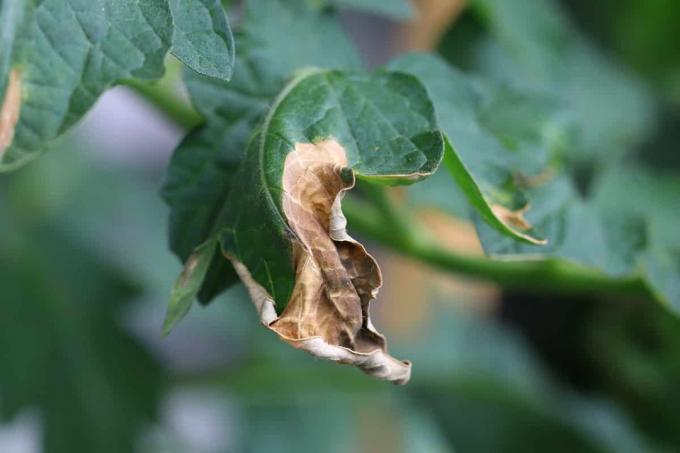
Control late blight and late blight in tomatoes
If pathogens of brown blight and late blight have settled on tomato plants, there is little hope of successful control. Home remedies and mechanical interventions only make sense in the early stages. It is all the more important that you prevent infections in a targeted manner through care measures.

How healthy are tomatoes? Information on calories, nutritional values & Co.
Snack healthy? The tomato makes it possible! Find out here why the red fruit should end up on the plate more often!



